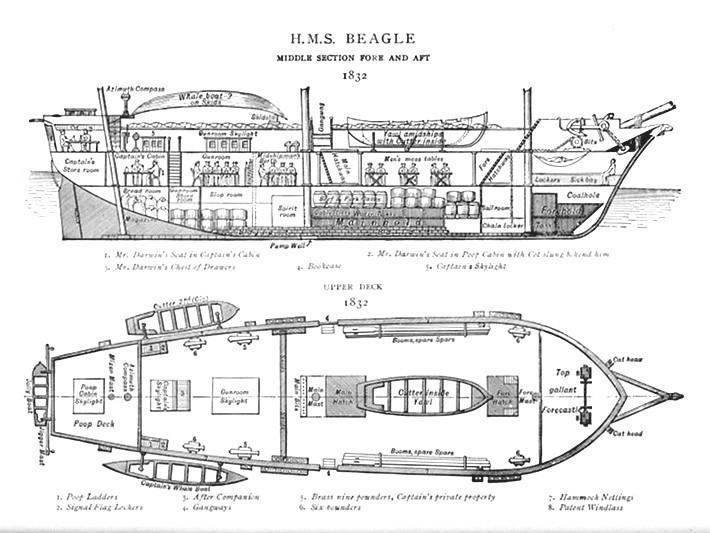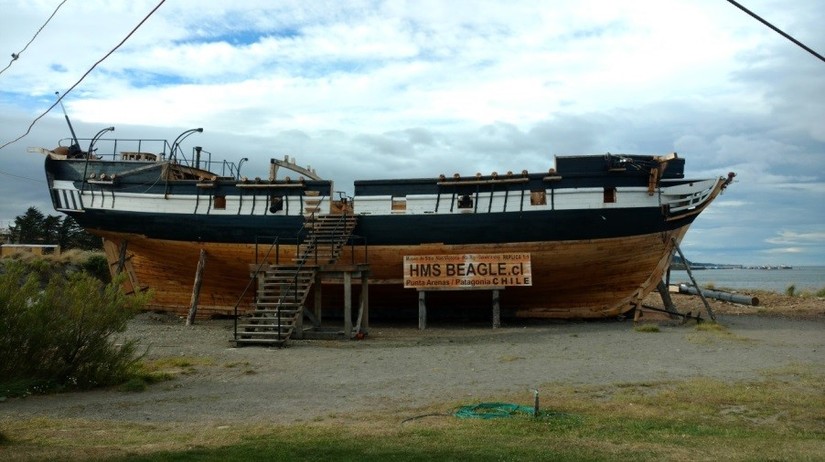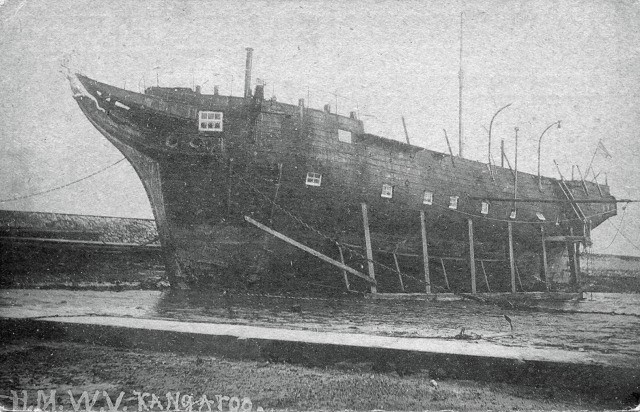HMS Beagle 200th Anniversary
05/05/2020 | Gustav Milne
HMS BEAGLE:
Mapping the world; Educating Darwin; Guarding Essex
The year 2020 marks the 200th anniversary of the launch of HMS Beagle on the Thames at Woolwich on 11th May 1820, at a cost of £7,800. She was a Cherokee-class Royal Naval survey ship that mapped unchartered coasts across the globe between 1826 and 1843, famously accommodating the young Charles Darwin on one of her expeditions. That particular journey proved instrumental in the development of Darwin’s thinking, from which his ground-breaking theories of human evolution were later developed.
But HMS Beagle was sold to HM Coastguard in 1845 and then served in that role on the Essex coast for the next 25 years. It was in 1859, while the Beagle was stationed on the River Roach, that Darwin’s great book ‘On the Origin of Species by means of Natural Selection’ was published, cementing his reputation as one of the greatest thinkers of the modern age. As for HMS Beagle, a different fate awaited: she was broken up in 1870 at Paglesham, next to our Mersea Island Discovery Progamme area.
HMS BEAGLE 1820-1845

HMS Beagle 1832: Cross-section showing arrangements below-deck arrangements and deck plan, modified for second voyage
(commons.wikimedia.org)
HMS Beagle had an adventurous life, attending the celebrations for the coronation of George IV in 1821 before completing three survey voyages for the Royal Navy. The first voyage (1826-30) took her to Tierra del Fuego to survey the South American coast. On her return to England, she carried three native Fuegians and a new captain, Robert Fitzroy RN.
The second voyage (1831-36) introduced Charles Darwin to the story and to Captain Fitzroy, who had overseen a major refit of the Beagle, much of it at his own expense. The captain decided that a self-financing naturalist could accompany the crew on this long expedition, and the 22-year old botanist Charles Darwin was taken on. The scientific circumnavigation of the globe expedition left Devonport on December 10th 1831 travelling via Tenriffe and the Cape Verde Islands to South America (including a return to Tierra del Fuego), and then along the west coast of that continent. After many coastal surveys and inland expeditions, the Beagle sailed to the Galapagos Islands, where Darwin made further studies of the flora, fauna and geology during the month he stayed there.

Replica of HMS Beagle under construction in 2016 for the Nao Victoria Museum, Punta Areneas, Chile (en.wikipedia.org)
The surveys and expeditions continued in Tahiti, New Zealand and Australia. The long journey home took in Keeling Island, Maritius, South Africa, St Helena, Ascension Island, Brazil and the Azores, finally arriving in Falmouth Cornwall in October 1836. Darwin had kept a detailed diary of this life-changing adventure, which was initially published under the title: Journal of researches into the natural history and geology of the countries visited during the voyage of HMS Beagle round the world, under the Command of Capt. Fitz Roy, RN. The account is now better known by the rather shorter title The Voyage of the Beagle.
HMS BEAGLE 1845-1870
After HMS Beagle’s third voyage (18337-1843) to South America, South Africa and Australia, she was transferred to HM Customs and Excise. In a dramatic change of role, she now served as a static coastguard station, to help deal with shipwrecks and to control smugglers on the Essex Coast. Now renamed WV7 (Watch Vessel 7), she accommodated up to seven officers and their families. The most likely location for her berth was near Paglesham, where an old naval anchor of 1841 was found, as well as a concentration of mid 19th-century domestic pottery recovered from the foreshore by concerned local archaeologists. But there is now no sign of the ship herself as she was ignominiously sold off in 1870 to be broken up, a task which was most thoroughly executed.

HMS Beagle was one of several ex-Royal Navy ships taken on as stationary Watch Vessels by the Coastguard. The example shown here is HMS Kangaroo built at Chatham, 1850. After service as a hospital ship in the Crimean War and then for the Coastguard at Burnham on Crouch, she was broken up in 1897. (Stebbings Archive)
LAST BERTH OF THE BEAGLE
Essex boasts the final resting place of this historic vessel: such a site and such a vessel should indeed be celebrated. Her last berth is actually on the Essex Coast Path near Paglesham, and it can be also be seen from across the water on Wallasea Island. This is part of the RSPB's major redevelopment of their reserve, for which it was planned to include three lakes named Darwin, Fitzroy and Stokes (the latter two gentlemen being captains of the ship) in commemoration of the contribution to the natural sciences that their voyages made.
There have been several attempts to find the remains of the Beagle on the Essex coast, with the most recent attempt being in 2019. But no hard evidence for the vessel itself has been recovered on the shoreline. But when she was broken up in 1870, where did all those reusable timbers go? There are suggestions that some buildings still standing in the area may have been repaired or rebuilt with material from the Beagle. All we have to do now is find them, not in the mud, but on dry land.
New work by Wessex Archaeology has used drones to reveal the outline of the dock in which the Beagle last berthed & is thought to have been dismantled. It has now been announced the site will receive protected status & there are plans to install a viewing platform on Wallasea Island, which will look out over the water to the ship's final resting place.
Certainly the Beagle deserves to be remembered, not for her dismal demise, but for her extraordinary career. After all, while Darwin changed the world, it was HMS Beagle that changed Darwin.
Gustav Milne April 2020








